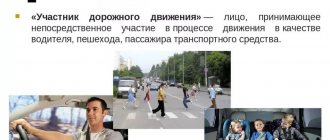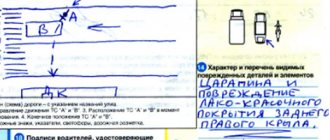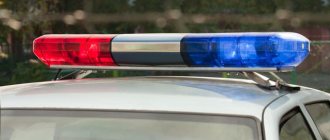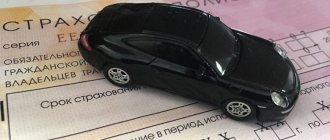First actions after an accident
Often, after an accident, due to stress, car owners begin to emotionally figure out which one is to blame.
Such proceedings often lead to conflicts and subsequent violations of the procedure for registering an accident. In order to comply with the established standards, every driver, regardless of the degree of guilt, must remember what is unacceptable to do after an accident:
- try to avoid responsibility by fleeing the scene of the incident;
- move cars until the arrival of the traffic police or video recording;
- stir up a conflict with the driver of the second car;
- engage in registration of an accident without checking the safety and absence of injuries of other participants in the incident.
Correct actions in case of an accident under compulsory motor liability insurance in 2021:
- safety assessment, detection of injuries in all citizens who were in damaged cars;
- If injured people are found, immediately call an ambulance team;
- placing signs warning other drivers that the road is closed as a result of an accident;
- Carrying out photo and video recording of the location of the damaged cars and the damage that appeared after the collision;
- exchange of contact information with the second driver (phone number and policy number);
- calling traffic police officers or mutual agreement to the European protocol;
- if you disagree with the information about the accident presented in the police description of the accident, make a corresponding note in the field provided for this;
- receive from the state traffic inspector one copy of the protocol, police confirmation of the fact of the accident and a document on traffic violation;
- contact the company where the contract was concluded and report the current situation.
It is necessary to call a company employee to the scene of an accident if this clause is marked as mandatory in the contract.
If the damaged cars create a significant obstacle that completely blocks the flow of other cars, detailed photos and videos should be taken from different angles, recording the position of the cars and individual damage. After this, you should drive the cars to the side of the road and make way for other cars.
Procedure for submitting documents to the insurer
Immediately after registering an accident, you must contact your insurance company and report the incident.
Next, you need to submit documents to the insurer as soon as possible, but before that, write an application there.
Required list of documents:
- passport of a citizen of the Russian Federation;
- TIN;
- driving license;
- PTS and STS;
- certificate of accident from the traffic police;
- OSAGO insurance.
After this, you just have to wait for an expert to evaluate the damaged car. He will then indicate how much will be paid for repairs, and the accident case will be sent to court.
The person at fault is required to provide the same list of documents to the insurance company. To do this, he is given a period of 3 days. If this deadline is missed, the insurer has the right to demand payment to the injured party from the culprit.
If any injuries were sustained as a result of the accident, they must be recorded at a medical institution and a certificate must be obtained. Then it also needs to be provided to the insurer. This must be done regardless of who you are in this situation - the culprit or the victim.
Some motorists trust this process to accident commissioners.
In this case, the commissioner must provide, in addition to the above documents, also a power of attorney for the car. It must be done by a notary. If the car was seriously damaged and was taken away from the scene of the accident by tow truck, then this must be confirmed by a certificate. It should indicate the costs of tow truck services.
Compensation for damage in case of an accident under compulsory motor liability insurance
Expenses associated with repairing a damaged vehicle are compensated by a company representing the guilty party. To do this, specialists check the damage and assess the damage. The injured party has the right to seek payment of the missing amount through the court if there is confidence in the understatement of the amount of payments.
Payments under compulsory motor liability insurance in case of an accident when both drivers have a policy
This is the simplest option to resolve the issue. Participants in an accident simply need to provide the company’s employees with a set set of documents and submit an application for payment.
When using the European protocol, 5 days are allotted for delivery of papers. Under any circumstances, the sooner the car owner notifies the insurance company about the incident, the easier the settlement procedure with the company.
What to do if one of the drivers does not have a valid policy
For minor damage, it is better to try to negotiate compensation for the damage on the spot.
The injured party, even in the absence of a contract, still receives compensation from the culprit’s insurer. The only difficulty may be the location of the company where the car owner entered into the contract. Sometimes the victim has to contact an office located in another city or region. When both drivers have insurance, these nuances are decided between the companies themselves.
The injured driver will have to pay a fine for driving without a license.
If the culprit does not have insurance, it will be more difficult to obtain compensation. In the most acceptable option, the car owner who provoked the situation pays for the damage on the spot. In other cases, you will have to call the traffic police and seek payment through the courts.
The culprit of the accident does not admit guilt, procedure
If there is no damage to the health of any of the participants in the road accident, emergency delivery to the hospital is not required, then the instructions for the actions of the driver in case of an accident oblige all participants in the accident to:
- call a traffic police inspector to the scene of the accident;
- using any means of photo and video recording, photograph a general plan of the accident site, damage to vehicles, license plates, braking marks;
- If possible, clear the roadway.
Legal consultation
Get qualified help right now! Our lawyers will advise you on any issues out of turn!
To get a consultation
Previously, we would like to remind you that it was strictly prohibited to move a vehicle before the arrival of a traffic police officer. New changes in driver actions in case of an accident from July 1, 2015, on the contrary, oblige the driver to clear the roadway. Clause 2.6.1 of the traffic rules prescribes:
Clear the roadway if the movement of other vehicles is impossible, having previously recorded, including by means of photography or video recording, the position of the vehicles in relation to each other and road infrastructure, traces and objects related to the incident, and take all possible measures to eliminate them. preservation and organization of a detour to the scene of the incident.
clause 2.6.1 of traffic rules
Moreover, according to paragraph 1 of Article 12.27 of the Code of Administrative Offenses, in case of failure to comply with this requirement, the parties will incur an administrative penalty in the form of a fine of 1000 rubles. Although the time frame for this provision is not defined, in order to avoid unnecessary fines, perform all the steps described above before the police arrive.
What documents are required for payment under compulsory motor liability insurance in case of an accident?
The list of documents depends on the circumstances of the accident. The main set includes:
- application for payment for restoration work;
- passport;
- driver's license;
- confirmation of car ownership or driving rights;
- protocol written by the inspector or European protocol;
- vehicle registration certificate;
- STS;
- notification of an incident;
- a valid insurance contract;
- details for transferring funds.
If necessary, the list is supplemented:
- report on the examination carried out;
- receipts and checks for payment for the tow truck, expert and related expenses;
- medical report on injuries or disability;
- an extract from the medical history;
- documents confirming expenses for treatment;
- certificate of dependents.
- death certificate;
- confirmation of funeral expenses.
Is it possible to repair a car?
And this will depend on who you are recognized as a result of an accident: the culprit or the victim, as well as on the method of registering the accident.
If you have become an injured party as a result of an accident and are going to receive insurance compensation for the damage caused, then you cannot repair the car yourself. In this case, there are 2 possible scenarios:
- in any case, you are prohibited from restoring the car after an accident and until an inspection or examination of the damaged vehicle is carried out (clause 11 of article 12 of the Federal Law on Compulsory Motor Liability Insurance),
- and after assessing the car, if you have not yet figured out the form of compensation for damage, you also cannot begin repairs yet; Only after the payment has been made in money can you begin to restore the car, but if you are given a referral for repairs, then the car repair shop will repair the car for you.
Otherwise, there will be a completely legal refusal of insurance compensation under OSAGO on the basis of paragraph 20 of Article 12 of the law.
How long before the culprit is allowed to start repairing the car?
For the culprit, everything is somewhat stricter in terms of possible consequences. Although, most motorists do not fully understand how legislation works in 2021. But this applies only to the European protocol.
Here, as the culprit of the accident, you have 2 main responsibilities, already regulated by Article 11.1 of the above Federal Law:
- not to repair your car for 15 calendar days, except non-working holidays, after an accident and provide it for inspection at the request of your insurance company,
- after the specified 15 days, you have the right to restore the car, but you still have the obligation to show it to the insurer upon his request - even if it has already been repaired.
And the culprit for failure to fulfill one of these duties may face recourse. Clause 1 of Article 14 of the Federal Law gives such an opportunity to an insurance organization. But let us remind you that we are only talking about registering an accident using the European protocol.
Cash payment or repair - which is preferable?
If an insured event occurs due to an accident under compulsory motor liability insurance, a more profitable option for the owner is to have the car repaired at a service station owned by the insurance company. When determining the amount of payments, they rely on wear and tear of parts and other indicators that reduce the value of the car. The amount received may be much lower than what is needed to completely repair the damage to the car.
When carrying out repairs by the insurance technician, they are required to replace all damaged parts with new ones, regardless of their degree of wear. If hidden defects are identified, the company is also obliged to pay for their elimination.
Read more in our article: money or repairs under MTPL?
What actions to take after an accident due to a pothole?
First, we note that any damage to the vehicle due to falling into a hole is an accident. You can read about this in paragraph 1.2. Traffic regulations:
A road traffic accident is an event that occurred during the movement of a vehicle on the road and with its participation, in which people were killed or injured, vehicles, structures, cargo were damaged, or other material damage was caused.
clause 1.2. Traffic rules
Consequently, the scheme of action in case of an accident due to falling into a hole will be the same, with a traffic police officer being called to the scene. Please note that it will no longer be possible to issue a European protocol here, since only one of your vehicles took part in the incident. Next, we’ll look at what to do in the event of an accident if you are not at fault, but the cause was a defect on a section of the road.
When taking photos or videos, be sure to record, in addition to damage and license plate number:
- the pit that caused the incident;
- absence of any temporary signs or barriers on the defective road section;
- address where the accident occurred (sign with street name, house number).
When the inspector prepares the documents, make sure that the diagram shows the dimensions of the hole on the road surface. According to clause 3.1.2 of GOST R 50597-93:
Coverage of the roadway: The maximum dimensions of individual subsidence, potholes, etc. are determined according to the rules established in Appendix B.
Table 5.3 GOST R 50597-2017. National standard of the Russian Federation. Roads and streets. Requirements for operational condition acceptable under the conditions of ensuring road safety. Control methods
If the defect exceeds the given values, it will be quite easy to win the case in court with the involvement of competent lawyers. The organization responsible for maintaining the road in this area can be found out directly from the inspector when registering the incident.
Reasons for refusal of payments
Several situations have been identified in which the insurance company has the right to refuse compensation payments. These include:
- providing an expired or counterfeit policy;
- filing an application under a policy in which the victim is not included as a person admitted to management;
- the accident occurred as a result of the transportation of dangerous goods;
- an application for compensation for moral damage has been filed;
- the required set of documents has not been provided;
- the accident was staged to obtain insurance payments;
- the application specifies compensation for damaged luxury items (antiques, precious jewelry, expensive household appliances);
- the culprit of the accident has not been identified;
- the application was submitted 2 years after the occurrence of the insured event;
- the application does not contain details for transferring compensation;
- the information in the application is incomplete or untrue.
How to receive payments under compulsory motor liability insurance after an accident if the culprit does not admit his guilt
Those responsible for the accident often refuse to admit their guilt. This is due to the fact that the insurance company pays compensation only to the injured party. The driver who created the emergency will have to restore his car himself.
In such cases, it is better for the victim to use the help of a car lawyer, since the case can last for several months and will require drawing up a statement of claim. If the person responsible for the accident refuses to admit his guilt, the victim must adhere to the correct line of behavior:
- do not allow anyone to make changes to the picture of the incident;
- carefully record in a photo or video the position of the cars, marks on the road and damage received;
- call traffic police to the scene of the accident;
- collect contact information of witnesses to the accident;
- ensure that the necessary data is entered into the protocol in full;
- call an insurance employee to the place;
- file a claim in court.
Often, the culprit of the accident refuses the previously admitted guilt after the European protocol has been drawn up, and goes to court to challenge it. In such situations, the victim will have to prove his case by providing the judge with all the photos and video materials, the protocol in hand, the expert report and other documents.
You should not agree to the proposal to wait two months (when it is too late to draw up a protocol on an administrative violation) and reach an amicable agreement. In such a situation, the victim loses valuable time. The insurance company insists on providing documents according to the European protocol within 5 days, or 15 days with a call from the traffic police.
Although these deadlines are not confirmed by law, a delay could complicate an already difficult situation.
What to do in case of an accident if you are at fault
Under no circumstances should you leave the scene of an accident. Firstly, it is simply ugly towards the other participant, and secondly, such actions can lead to even bigger problems.
The fact is that in most cases, hidden drivers are found by traffic police officers and brought to justice under Article 12.27 of the Code of Administrative Offenses of the Russian Federation. The punishment provided for by this rule of law is quite strict and provides for deprivation of the right to drive a car for up to 1.5 years or even arrest for 15 days. In addition, the offender will ultimately have to pay for repairs to the victim's car at his own expense.
Of course, since the second participant most likely has a compulsory motor liability insurance policy, he will apply for compensation to the insurance company and it will even make a payment. But, alas, it doesn’t end there. After settling relations with the victim, the insurer will demand that the culprit return all the money spent.
To avoid unnecessary expenses and litigation with the insurance company, it is necessary to officially record the incident. To do this you need:
- Stop the car;
- Install a special sign and turn on the emergency lights;
- Make sure that there are no wounded, and if there are, then provide assistance to them;
- Call a traffic police inspector or register an accident according to the European Protocol.
If the driver agrees that he is guilty, and the damage caused to the victim does not exceed 50,000 rubles, participants can record the accident without calling the traffic police. To do this, you need to fill out a notification about the accident and you can drive away.
Please note that registration under the European Protocol is not possible if in an accident:
- There are wounded;
- 3 or more cars were damaged in the accident;
- Property other than cars was damaged;
- One of the participants does not have a car insurance policy.










